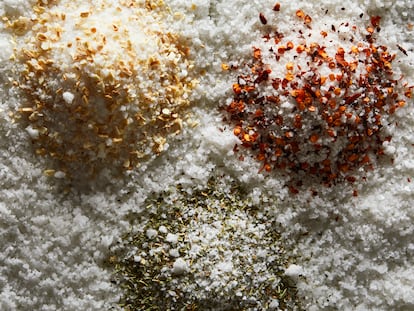Here’s why UNESCO has designated Peruvian ceviche as Intangible Cultural Heritage of Humanity
It’s one of the emblematic dishes of the country’s gastronomy and has now been recognized as such.

The Royal Spanish Academy allows it to be written as ceviche, cebiche, seviche or sebiche. It is defined as a dish made with marinated raw fish or shellfish typical of various Latin American countries. It’s one of the trademarks of Peruvian gastronomy, and UNESCO honored it at the 18th session of the Intergovernmental Committee for the Safeguarding of the Intangible Cultural Heritage in Botswana (Africa), as Intangible Cultural Heritage of Humanity. It’s more than a recipe, it’s proof of the importance of Peruvian cuisine as a factor in social cohesion, and it’s closely related to the Peruvian coast and the country’s highland and jungle regions.
On the northern coast, the ceviche de conchas negras, or black conch ceviche, stands out, and is consumed mainly in Tumbes and Piura. Local products are used in its preparation, like lime from Chulucanas and the conches from mangrove forests. In contrast, in the highlands the most popular ceviche is made with trout and served with mote (dried hominy boiled in water), instead of the traditional choclo (a large Peruvian corn varietal). In some towns, the standard lime juice is replaced by sanky, an Andean fruit that grows 9,800 feet above sea level.
In the jungle, the most common fish used for the dish is the paiche, whose meat is considered a gourmet ingredient. For the marinade, camu camu is popularly used, a fruit considered a superfood due to its high levels of vitamin C. Other local products can be added, like the charapita or tabasco pepper, the sachatomate (tamarillo plant) and the sachaculantro (an aromatic herb), which highlight the flavor of the Peruvian Amazon, according to a press release from the Commission for the Promotion of Peru of Export and Tourism (PROMPERÚ).
Mexican chef Roberto Ruiz just got back from Lima (Peru), a revelatory trip that taught him the origin of, but most importantly the differences and nuances between the ceviches prepared in his country versus their Peruvian cousins. In a conversation with EL PAÍS, he says that the recipe as prepared in Lima is full “of nuance, of depth, of aji no moto (a flavor enhancer that brings out the taste of the food), with a clear Asian influence that makes you never want to stop eating it because it’s so delicious.” In contrast, in Mexico, the fresh fish is sliced to order and seasoned with citrus. “It’s more basic, we add a citrus-based acid to cure it, add something for heat, marinate, and serve,” says the owner (among other restaurants) of Madrid’s Can Chan Chan, where they make a red prawn ceviche with crispy potato taco, and a green version with scallops, jalapeño and chili emulsion. In his country, he explains, “it’s customary to go fishing and bring limes, tomatoes, cilantro and onion, filet the fish and prepare it on the spot, once the catch comes in.” He adds that, “depending on whether we’re in the north or south, we use different fish.” For example, in the north they prepare the dish with prawns or shrimp, “which we call aguachile, and it’s very easy to make; we also use mahi mahi, a deep-sea fish whose meat is similar to the Peruvian flounder.
Ruiz says that another distinctive feature, which speaks to how the plate’s context varies country to country, is the typical setting for consuming the dish. “In Mexico it’s eaten in carts, rustic wooden carts, where fresh fish marinated with lime is served, and in Peru it is eaten in cevicherías and you can order it from breakfast to dinner.”
It’s this variety that leads Peruvian chef Luis Arévalo, owner of two restaurants in Madrid, Gaman Restaurante Nikki by Luis Arévalo and Akiro, to praise ceviche as an element of culture. “Ceviche has gone from being a recipe to a method of food preparation used in Mexico to Patagonia.” Around ceviche there is an air of mysticism, of something divine. Its origin is attributed to several countries, including Chile and Ecuador. Arévalo speaks of one clue to its history that comes from a pre-Columbian ruler, who ate fish with tumbo (a fruit rich in vitamin C that comes from the Peruvian highlands, and whose juice is used in sauces served with ceviches, tiraditos and causas (a dish made from alternating layers of mashed potatoes and fish or other meat).
He also cites the influence of the Spanish, who when they first arrived in Peru with “Moorish slaves, left behind their recipes for pickled fish, salted fish and citrus fruit sauces,” says the chef. Born in the Peruvian jungle town of Iquitos, he says that ceviche has been part of his diet since he was a child, especially on Sundays. Speaking via telephone, he recalls them using river fish like the paiche, one of the largest freshwater fish in the world that can measure up to 13 feet long, “similar to the cod,” or tiger shovelnose catfish. “My mother made it in the morning so we could eat at midday, when the fish was well-done. These days it wouldn’t be made like that, because we prioritize the taste of the fish. The marinating time isn’t as important now.”
Spain is experiencing a ceviche boom. Arévalo agrees with Ruiz that corvina is a good option for this kind of preparation, due to the fact that is holds up well to acids, “in addition to being available at a good price.” The Peruvian makes ceviche with corvina in Gaman, where they also serve a tuna version. Meanwhile, at Akiro, a more Asian-inspired restaurant, it’s made with hamachi. Arévalo also mentions the difference between ceviche (for which the fish is cut into cubes) and the tiradito (cut into fine slices). The former “has lime juice, onion, hot pepper, cilantro and salt,” and involves the simplest preparation, although each cook has their secret touch. “Some people add garlic, ginger or celery,” says Arévalo. In contrast, the tiradito allows for other kinds of preparation. “They are thin slices arranged on a plate that is seasoned with milder sauces, like leche de tigre.”
Ceviche fever arrived to Spain in 2007, with the arrival of Peruvian chef Gastòn Acurio, who elevated Peruvian cuisine to fine dining with his restaurant Astrid and Gastón, which was located right on Madrid’s central thoroughfare Paseo de la Castellana and was eventually taken over by chef Virgilio Martínez — who today, is at the helm of Lima’s Central, the best restaurant in the world according to The World’s 50 Best Restaurants — before closing in 2011. “It really helped with acceptance and opened the door to others,” says Arévalo.
Sign up for our weekly newsletter to get more English-language news coverage from EL PAÍS USA Edition
Tu suscripción se está usando en otro dispositivo
¿Quieres añadir otro usuario a tu suscripción?
Si continúas leyendo en este dispositivo, no se podrá leer en el otro.
FlechaTu suscripción se está usando en otro dispositivo y solo puedes acceder a EL PAÍS desde un dispositivo a la vez.
Si quieres compartir tu cuenta, cambia tu suscripción a la modalidad Premium, así podrás añadir otro usuario. Cada uno accederá con su propia cuenta de email, lo que os permitirá personalizar vuestra experiencia en EL PAÍS.
¿Tienes una suscripción de empresa? Accede aquí para contratar más cuentas.
En el caso de no saber quién está usando tu cuenta, te recomendamos cambiar tu contraseña aquí.
Si decides continuar compartiendo tu cuenta, este mensaje se mostrará en tu dispositivo y en el de la otra persona que está usando tu cuenta de forma indefinida, afectando a tu experiencia de lectura. Puedes consultar aquí los términos y condiciones de la suscripción digital.
More information
Archived In
Últimas noticias
Most viewed
- Reinhard Genzel, Nobel laureate in physics: ‘One-minute videos will never give you the truth’
- Oona Chaplin: ‘I told James Cameron that I was living in a treehouse and starting a permaculture project with a friend’
- Pablo Escobar’s hippos: A serious environmental problem, 40 years on
- Why we lost the habit of sleeping in two segments and how that changed our sense of time
- Charles Dubouloz, mountaineering star, retires at 36 with a farewell tour inspired by Walter Bonatti










































